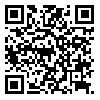BibTeX | RIS | EndNote | Medlars | ProCite | Reference Manager | RefWorks
Send citation to:
URL: http://jdisabilstud.org/article-1-1197-en.html
2- Associate Professor, Department of Psychology, Yazd Science and Arts University, Yazd, Iran
3- MA Student in Clinical Child Psychology, Yazd Science and Arts University, Yazd, Iran
Abstract
Background & Purpose: Drug abuse refers to the use of narcotics in a manner that is harmful to the drug consumer himself/herself or others, which is a form of substance–related disorder. Different definitions of drug abuse are used in public health, medicine, and justice and criminal justice. In some cases, when a person is affected by drugs, he or she faces offensive or antisocial behavior, and a long–term personality change may occur. In addition to physical, social, and psychological harm, the use of some substances may lead to criminal penalties, although this depends on the local judicial rules. In 2013, substance use disorders caused the deaths of 127000 people, compared with 1990, which was 51000. Drug disorders caused the death of 4300 people, amphetamine disorders caused 3800 deaths, and alcohol–related disorders caused 139000 deaths. The purpose of this study was to compare the effectiveness of the combination of cognitive–behavior therapy and methadone therapy with methadone therapy alone on the anxiety and craving beliefs in adolescents with substance abuse.
Methods: This quasi–experimental study employed a pretest–posttest design. The statistical population of the study consisted of all opioid–addicted patients living in Isfahan City (Isfahan Province, center of Iran) who were referred to addiction treatment centers in Isfahan during the winter of 2017. The sample was selected as available. In this regard, 30 male addicts who were referred to the addiction treatment center for opioid withdrawal and treatment were selected. Subjects were randomly divided into experimental and control groups containing 15 subjects. One group received methadone therapy, and the other group received methadone therapy and cognitive–behavior therapy. The data were collected using the Beck Anxiety Inventory and the Craving Beliefs Inventory by Right and Beck.
The Beck Anxiety Inventory is a self–report inventory that is used for measuring the severity of anxiety in children and adults. The questions used in this measure ask about common symptoms of anxiety that the subject has had during the past week, including the testing day (such as numbness and tingling, sweating not due to heat, and fear of the worst happening). It is designed for individuals 17 or older and takes 5 to 10 minutes to complete. Several studies have found the Beck Anxiety Inventory to be an accurate measure of anxiety symptoms in children and adults. This inventory contains 21 questions, each answer being scored on a scale value of 0 (not at all) to 3 (severely). Higher total scores indicate more severe anxiety symptoms. The standardized cutoffs are as follows: 0–9, normal to minimal anxiety; 10–18, mild to moderate anxiety; 19–29, moderate to severe anxiety; and 30–63, severe anxiety. Although drug craving has been defined in numerous ways, it has generally been regarded as a desire to use a drug. Craving is usually considered a subjective experience because one must be aware of a desire to crave. With few exceptions, craving has been conceptualized as reflecting a drug–acquisitive state, which motivates drug use. Despite the popular appeal of craving as a construct, several definitional issues remain unresolved. To analyze the data, the mean and standard deviation were calculated at the descriptive level, and at the inferential level, covariance analysis and the Kolmogorov–Smirnov test were performed using SPSS 21.
Results: The difference between the two groups was significant in anxiety (p=0.043) and craving beliefs (p<0.01), indicating that a combination of cognitive–behavior therapy and methadone therapy was more effective than methadone therapy alone.
Conclusion: Combination methadone therapy with cognitive–behavior therapy is an effective method for the treatment of drug abuse consequences and is recommended to all professionals in this field.
| Rights and permissions | |
 |
This work is licensed under a Creative Commons Attribution-NonCommercial 4.0 International License. |





